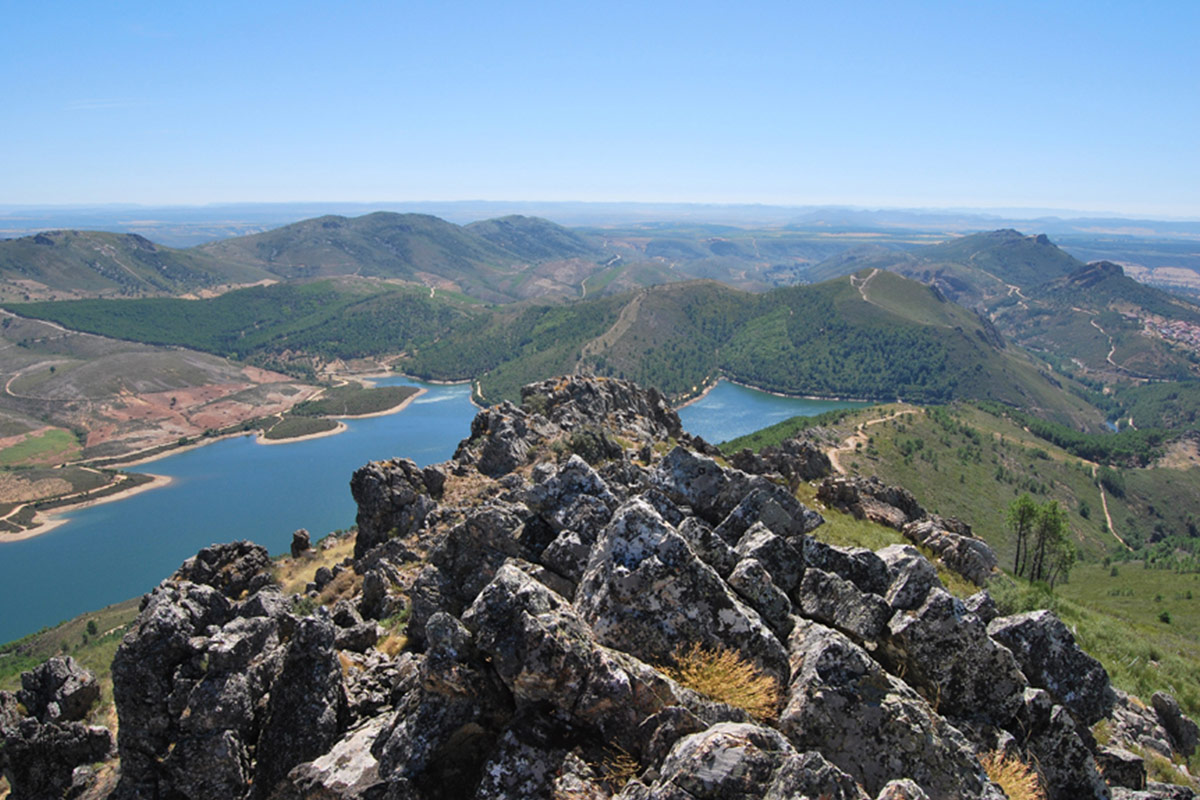LOCATION AND ACCESS
The Sierra de la Madrila lies to the north of the town of Cañamero and can easily be reached by car from the Cañamero-Berzocana road. At the roundabout on the pass between the two towns, take the CC-95 towards Navezuelas and after a few metres an old cart track to the right that leads to the top of this sierra.
ATTRACTIONS OF THE VISIT
As well as the places described above, on some quartzite crests of the Sierra de la Madrila we can observe fine examples of Cruziana, trace fossils produced by Trilobites crawling on the sea floor, together with tubular markings of sandworms, which are both from the Ordovician period (some 480 million years ago) of the Palaeozoic era.
In addition, on the eastern hillside very near the peak we can visit an interesting isolated rocky shelter of quarzites known as the Cancho de la Burra to observe numerous schematic cave paintings of reddish and white tones. These paintings were executed by shepherds and hunters from the Chalcolithic period some 3,500 years ago and are very abundant in almost all the caves and shelters of the peaks and hillsides of the valley of the River Ruecas.
On the hillside of the Sierra de la Madrila stands the Interpretation Centre of the Special Bird Protection Area (Zona Especial de Protección de Aves, ZEPA) of Las Villuercas and the Guadarranque Valley; one of its rooms is devoted to the Geopark. Close by can be found the cave known as the Cueva de la Chiquita or Cueva de Álvarez, a sanctuary with schematic cave paintings by Chalcolithic man, and the natural swimming pools of the River Ruecas.
GEOLOGICAL INTERPRETATION

